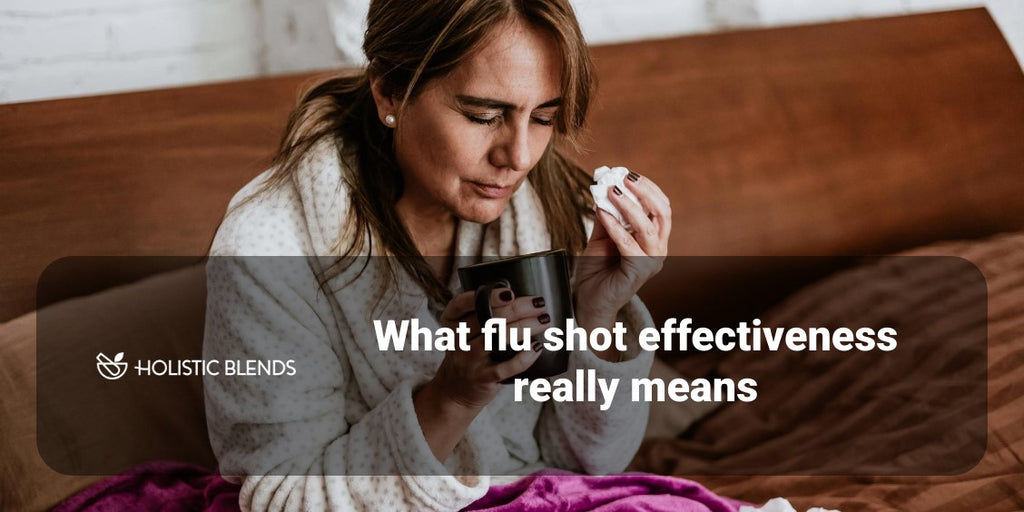Unless you’ve been living under a rock, you’ve no doubt noticed the onslaught of signs and advertisements literally everywhere telling you to “Get your flu shot!”
And, right about this time of year, studies of flu shot effectiveness are typically conducted…and whether you hear about those studies on the news depends on the results of said studies. After all, the pharma-funded mainstream media can’t risk ticking off their primary source of advertising revenue with some less-than-glowing reports.
In the early 2000’s, flu shot effectiveness was said to be somewhere around 60 percent, but it has continued to drop since that time.
Currently, the effectiveness estimate is about 35% in the southern hemisphere and 25 percent in the north.
But what do those numbers really mean?
Let me enlighten you.
Flu shot effectiveness—not necessarily what you think
To show how flu shot effectiveness is calculated, let’s use an example:
Let’s say there is a (fictitious) country of 50 million people, and half the population gets a flu shot while the other half does not.
So, there are 25 million people with the shot and 25 million without.
Now let’s say that 5.25 percent of the population (50 million x .0525 = 2.625 million) gets the flu.
Based on a 25 percent flu shot effectiveness estimate, that alleges about 25 percent fewer people in the shot group should get the flu as compared to the other group.
But the numbers drill down to a different story! Using my numbers above this would result in the following:
2,625,000: Total number of people who got the flu
Broken down as: 1,500,000 flu cases without the jab and 1,125,000 (25 percent fewer) flu cases with the jab.
Out of the total population of 50 million, the percentages between the 2 groups are:
Without the shot: 1,500,000 / 25,000,000 = 6% got the flu
With the shot: 1,125,000 / 25,000,000 = 4.5% got the flu
So, in reality, you are only 1.5% less likely to contract the flu than someone who didn’t get a shot.
There are risks
In addition to the (less than impressive) protection you’d get from a flu shot, there are also risks in the form of adverse reactions!
Flu shot reactions can include:
- Encephalitis (brain inflammation)
- Anaphylaxis (life-threatening allergic reaction)
- Stevens-Johnson Syndrome—a severe condition where your skin begins to blister and peel off, leaving raw areas. It can eventually lead to dehydration, pneumonia, sepsis and organ failure.
- Guillain-Barre syndrome—where your body’s immune system attacks your nerves, leading to paralysis.
- Bell’s palsy (facial paralysis)
- Convulsions
- Seizures
- Syncope (fainting)
And there are also toxins!
Flu shots also may contain a variety of toxins including:
Formaldehyde: Formaldehyde is a documented carcinogen (cancer causing substance), and it can also cause allergic reactions.
Aluminum: Aluminum is linked to Alzheimer’s disease. Studies show that people who received 5 or more flu shots during a 10-year period have a 10 times higher risk of Alzheimer’s, compared to those who had fewer than 2 flu shots.
Plus, the flu strains themselves may be cultivated in animal proteins such as rabbit brain tissue, monkey kidney tissue, pig blood, chicken embryo, embryonic guinea pig cells and calf serum. There has been no safety testing done to examine the effects of injecting animal DNA into humans.
Also, although flu shots are pushed heavily on pregnant women, no testing has been done proving their safety for use in pregnant women.
Make an informed decision that’s right for you
Whether you choose to get a flu shot is up to you but remember that when it comes to the flu as well as all other illnesses, prevention is the key.
When you support your immune system and let it fight and prevent sickness like it was designed to, it is FAR less likely that you will have to worry about illness to begin with.
Here are 4 ways you can boost your immune system so it can better protect YOU:
Immune Booster #1: Have a healthy whole-foods diet
Your health from head to toe depends on having a diet of wholesome real foods, including lots of fresh fruits and vegetables.
Simply put, your body cannot defend itself against illness and disease without essential nutrients.
At the same time, it’s crucial to avoid sugars, refined carbs, soda and excessive alcohol intake.
Immune Booster #2: Vitamin D
In addition to beefing up your immune system to help it fight the flu (and other illnesses), vitamin D is an effective antimicrobial agent--it produces up to 300 different peptides in your body that kill bacteria and viruses!
And when it comes to vitamin D supplementation, nothing beats Optimum DK Formula with FruiteX-B!
Optimum DK Formula is a highly innovative product that combines the well-documented immune and bone-building support of vitamin D with the unique special assistance of vitamin K, which also supports bone health and has anti-tumor properties too!
Immune Booster #3: Get regular exercise
Nothing beats regular exercise when it comes to helping you maintain a healthy bodyweight, eliminate toxins, support sound digestion and nutrient absorption and encourage better sleep.
And all of that translates to a strong-functioning immune system!
Immune Booster #4: Reduce stress
Stress causes harmful changes to your gut microbes and impairs your immune functioning, making you far more likely to catch every bug or virus around.
So, if chronic stress is an issue for you, it’s time to do what you must to chill out. (Keep in mind that regular exercise is one of the best stress reducers on the planet!) Ask for help if you need it.
To your GREAT health,
Sherry Brescia
PS: Danielle will unavailable some of the day today by phone, chat, and email. Any messages will be returned as quickly as possible. She is working on some updates and setup tasks for the new office which requires her downtime today. As always the website is 100% available to you 24/7 for your needs.Thank you for your patience!











